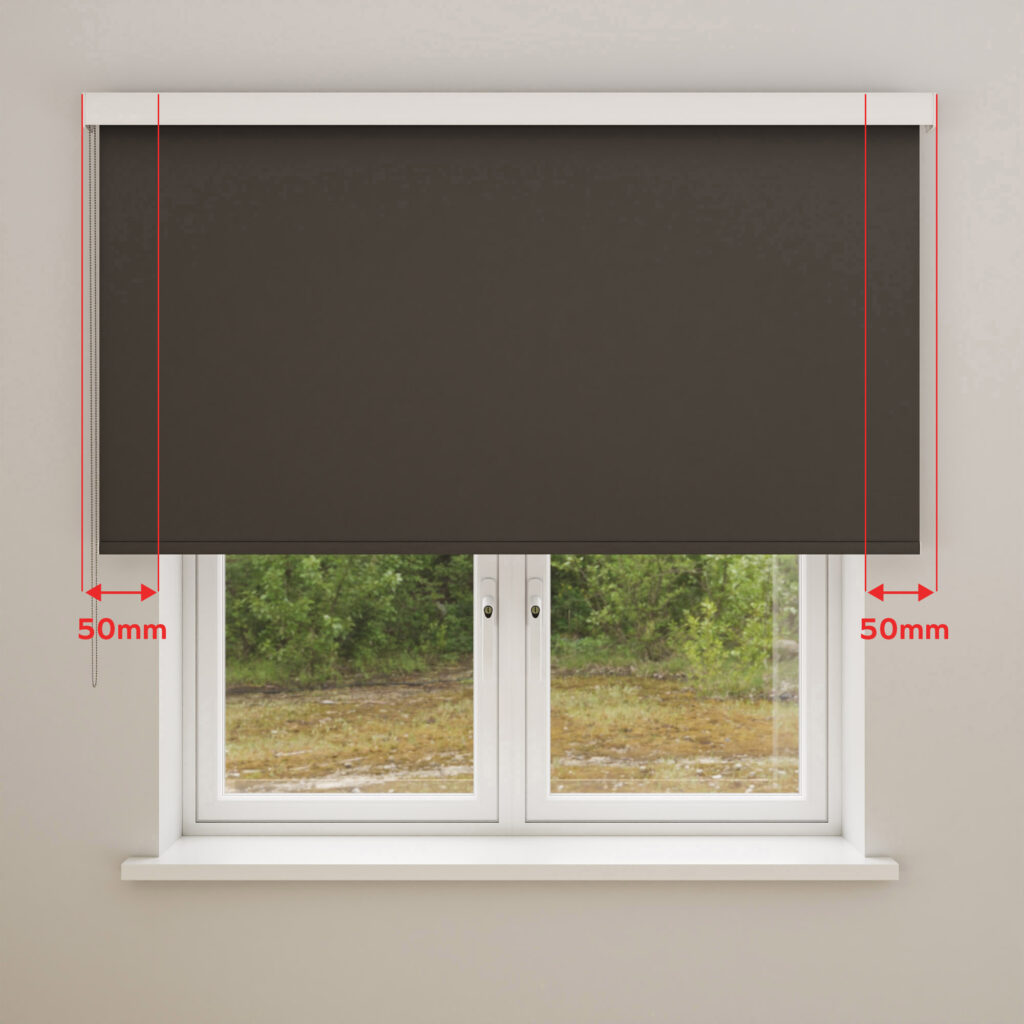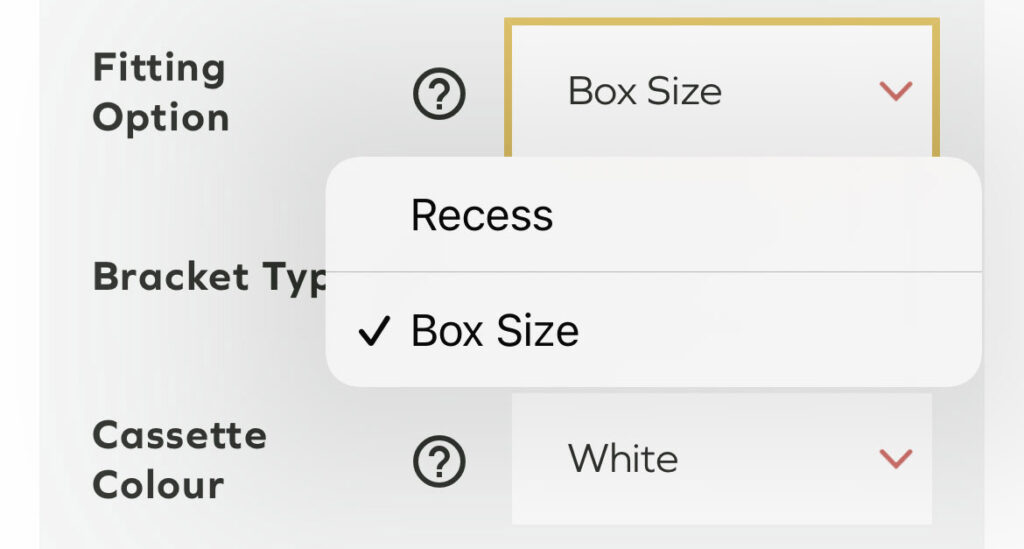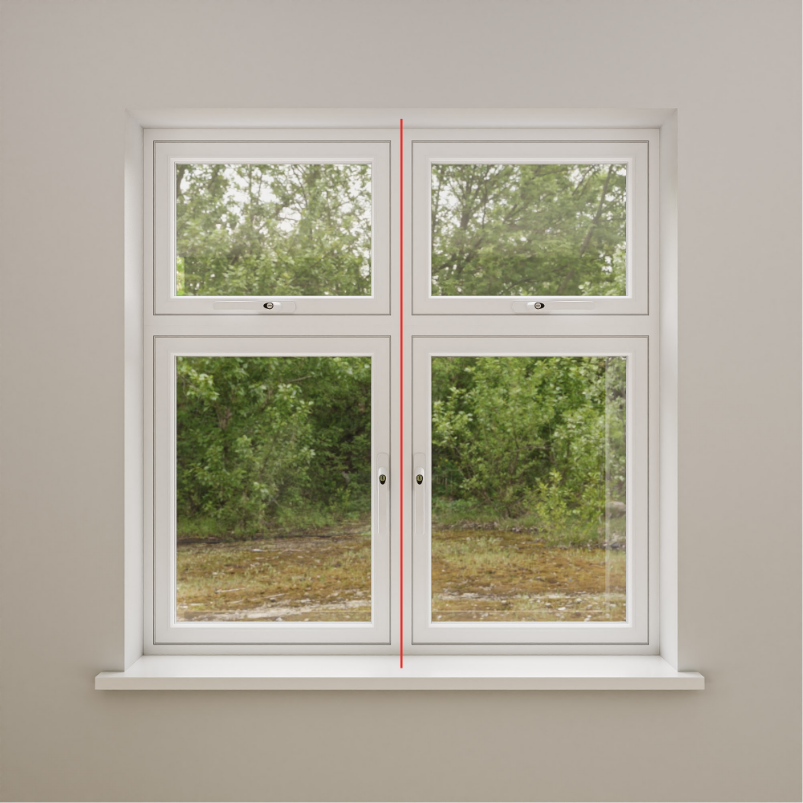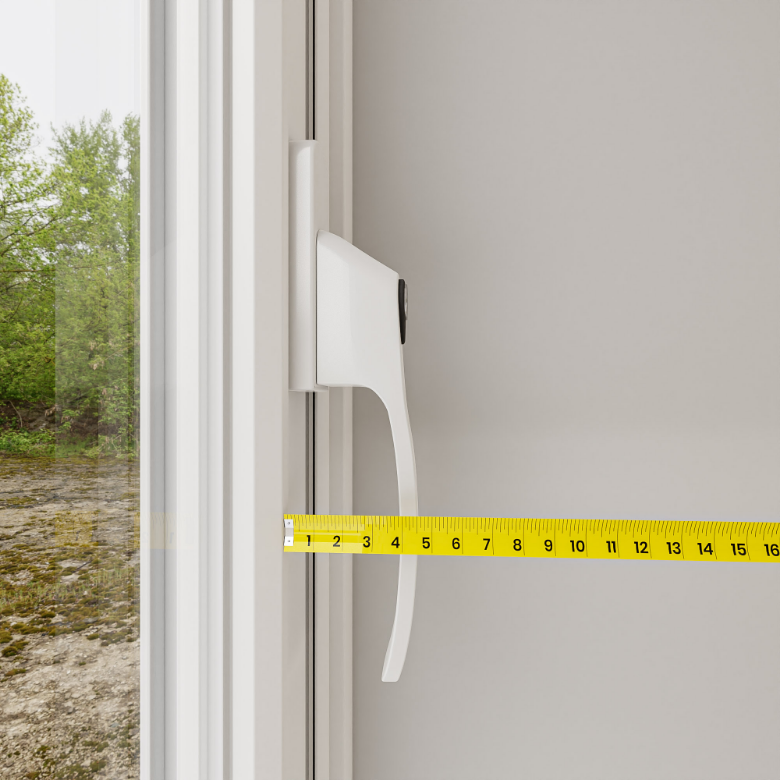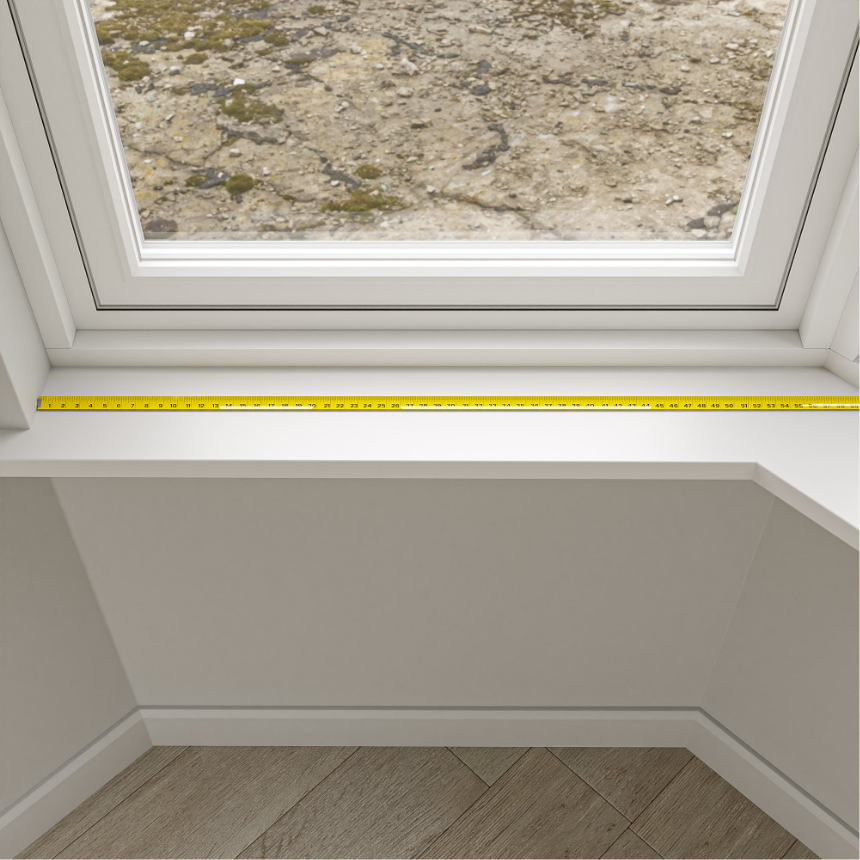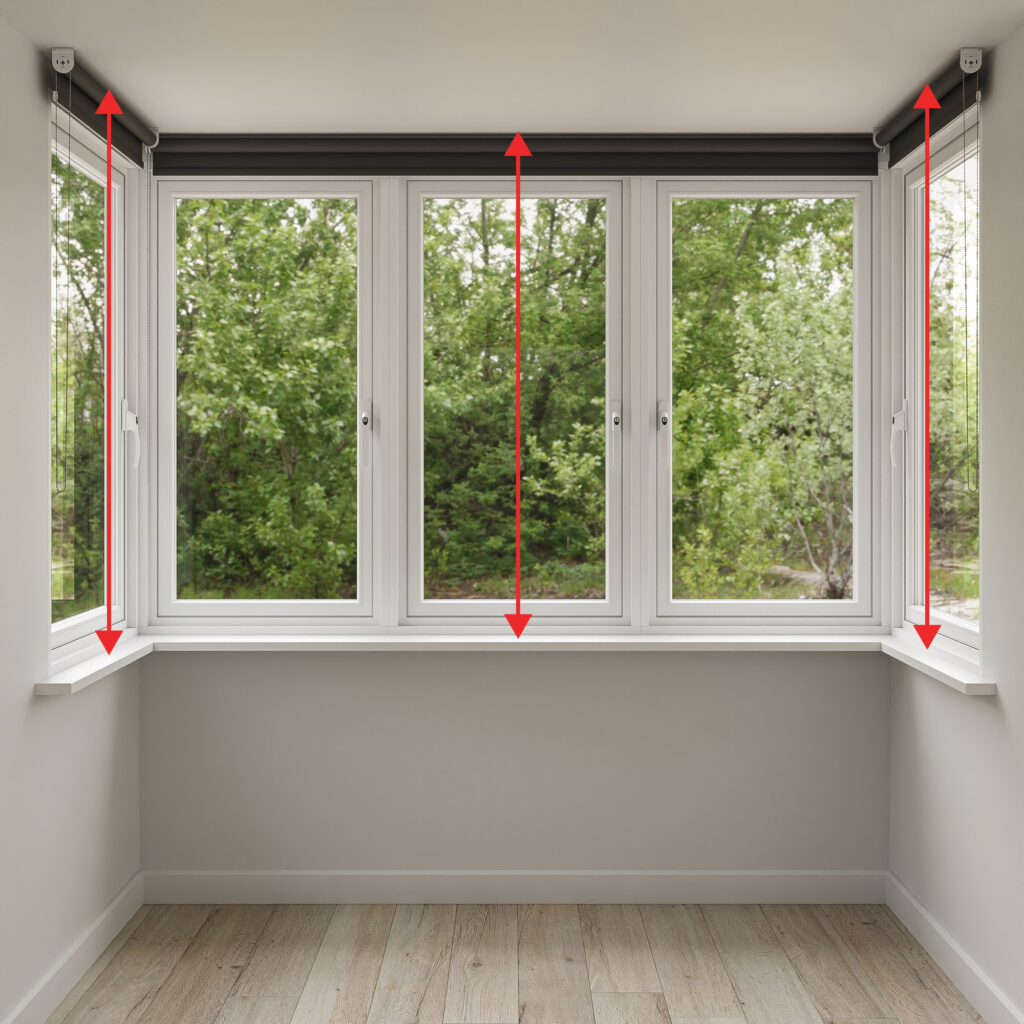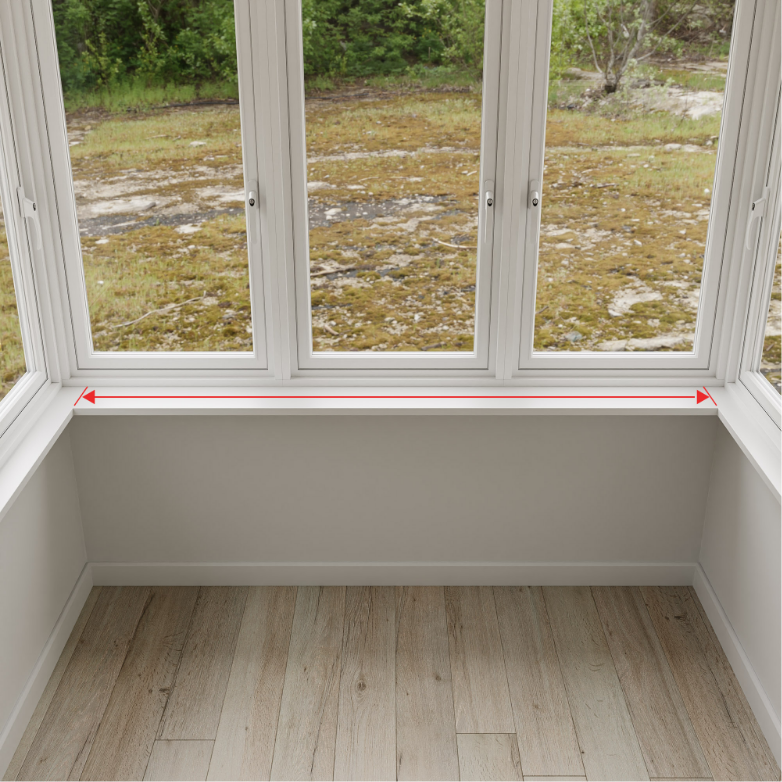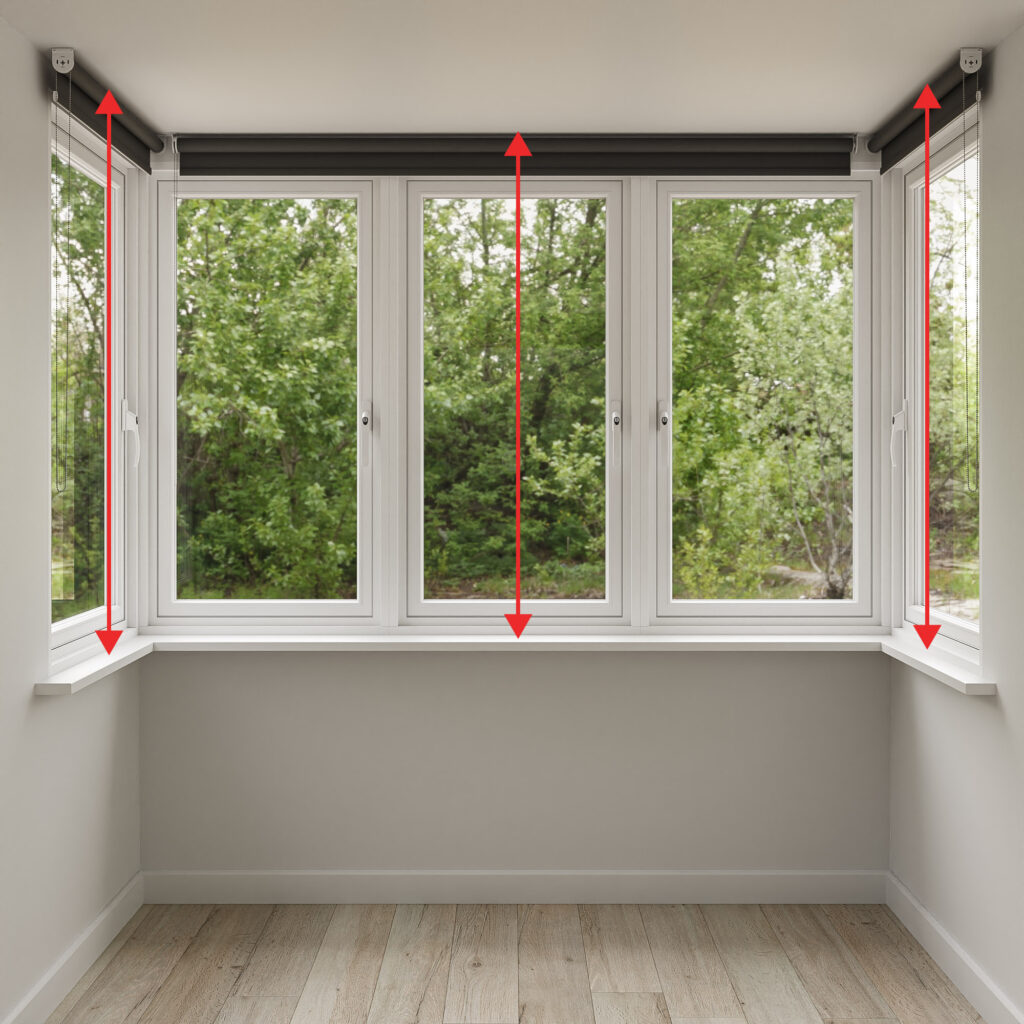Measure the width of the recess in at least three places where you would like to install your blind. You will use the smallest of these figures as your width measurement when ordering your blind.
Important!
Depth check – To allow sufficient room for your blind to operate, it’s important that there is a minimum of 85mm depth clearance (if you are top-fixing the brackets) or 95mm depth clearance (if you are face-fixing the brackets) between the farthest point of any obstruction and the front of the recess.
Check for width obstructions – Any obstructions in your recess (tiles, etc.) may reduce its effective width. Find the effective width by measuring between these points. If your top recess measurement is at least 40mm greater than this figure, then use the effective width figure when ordering your blind. Otherwise, use the top recess measurement as your width measurement as explained above. (For example: if the bottom of your recess measures 970mm and the top measures 1000mm, you would enter your top width measurement as the fabric width would clear the obstruction. This is because the top recess measurement is only 30mm (less than 40mm) greater than the bottom measurement.)
Please note: The fabric, including the bottom bar, will be approximately 48mm narrower than the recess measurement provided.
 About Us
About Us Free Samples
Free Samples Blinds on Finance
Blinds on Finance My Account
My Account Measuresafe
Measuresafe No Drill Blinds Comparison
No Drill Blinds Comparison






